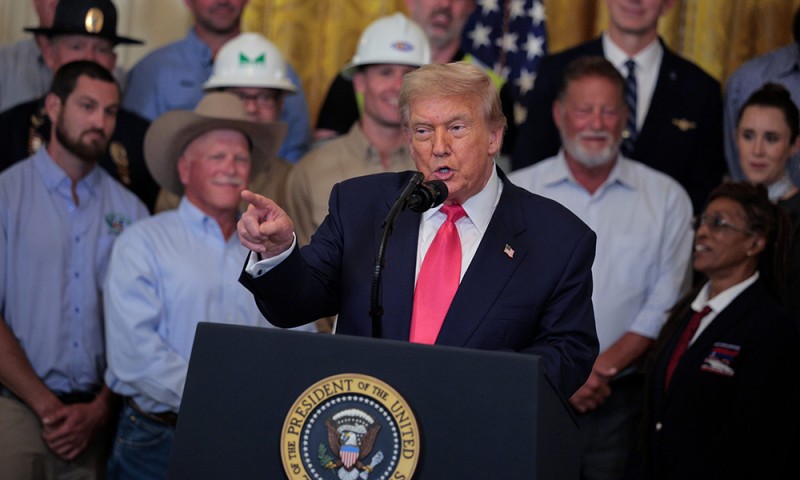
美国正深陷能源领域的紧迫困局:必须从所有来源扩充电力供应,否则将面临潜在失败。
这意味着在与中国争夺人工智能霸权的竞赛中落败;无法为公民提供充足且价格亲民的电力;以及在气候变化危机愈发严峻的情况下,无法实现能源最大程度清洁化的目标。
尽管唐纳德·特朗普一直宣扬美国的能源主导地位,还通过行政命令加速推进天然气发电和新核电站项目,然而监管和供应链瓶颈,却让这些项目落地仍需数年之久。
与此同时,特朗普的《大而美法案》蓄意阻碍更易于快速建成的风能、太阳能和电池储能项目,而这些项目本可满足被称为“超大规模企业”的大型云服务提供商对数据中心庞大的电力需求。国会于7月3日通过的最终法案(众议院以218票对214票通过)同意迅速取消清洁能源税收抵免,而这类抵免本可助力强化已趋于紧张的电网。
共和党正凭借削减清洁能源税收抵免来支持化石燃料,同时迎合总统本人对可再生能源的抵触情绪:特朗普频繁谴责风能和太阳能存在间歇性问题——即便这种不稳定性正随着可再生能源电池储能技术的持续进步而逐步被抵消。诚然,削减税收抵免也有助于抵消法案中其他方面的联邦支出。
不出所料,清洁能源行业对《大而美法案》表示强烈反对。太阳能产业协会(Solar Energy Industries Association)总裁兼首席执行官阿比盖尔·罗斯·霍珀(Abigail Ross Hopper)表示,该法案将导致公用事业账单上涨、制造工厂关闭、数万个美国建筑业岗位流失,还会削弱电网。
她说:“这项立法将削弱美国在全球的竞争力,破坏我们的能源未来,还会重创那些为经济发展注入动力、强化国家安全的行业——同时将21世纪的科技竞赛拱手让给中国。”
另一方面,由于化石燃料利益集团去年为特朗普和共和党提供资金支持,石油和天然气游说团体——这些团体常谴责清洁能源税收抵免不公平——对最终法案表示赞赏。
石油和天然气行业组织美国西部能源联盟(Western Energy Alliance)总裁梅丽莎·辛普森(Melissa Simpson)称赞这是“一项具有里程碑意义的法案,能够释放出我们所需的能源”。她特别提及“推动在公共土地上进行石油和天然气开采的条款”,以及叫停针对天然气排放实施“过度征税”的做法。
“能源主导”还是“能源丰裕”?
最终法案规定,将迅速取消所有在2027年底前未能投产的清洁能源项目的税收抵免,不过对2026年6月前就已开工的项目予以豁免。参议院最初的措辞相对宽松,要求在2027年底前开工即可——对于那些迫切想要启动项目的人而言,这一看似细微的时间线差异,实则影响巨大。
这不仅是清洁能源开发商或环保倡导者面临的问题;它可能会大幅延缓美国计划中迫切需要达成的发电量快速提升进程。简而言之,这意味着电力需求与日俱增的科技和制造业,以及不断增长的人口,都将面临供电不足——这意味着所有人将面临更高的电费账单,还可能出现电力短缺乃至停电的状况。
非营利组织Rewiring America的首席执行官阿里·马图西亚克(Ari Matusiak)表示:“这项法案不仅会加重家庭负担,还会损害国家利益。我们需要低成本、充足的能源来参与全球竞争。我们将集体陷入更贫困、更脆弱的境地,也愈发难以在瞬息万变的世界中保持领先优势。”毕竟,根据美国能源部的数据,去年美国新增发电量中近90%来自可再生能源。
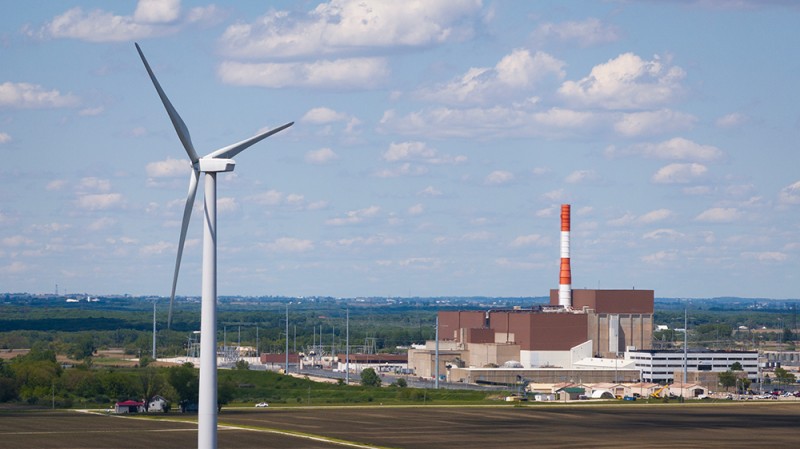
标普全球大宗商品洞察预测,将大多数项目的完成期限提前至2027年,会导致未来10年美国清洁能源项目建设量减少约20%。
标普全球(S&P Global)气候市场与政策分析主管罗曼·克拉马丘克(Roman Kramarchuk)表示:“这一影响极为重大。这并非占比微小的20%,而是占新增部署量绝对多数的20%。”
他补充道:“情况不容乐观,最终结果将是推高电力成本。”
科技界、公用事业公司和政治温和派不再呼吁所谓的“能源主导”,而是愈发迫切地恳请扩大“能源丰裕”局面——这一立场主张接纳所有能源形式,以更快提升产能并助力压低价格。但两党都受意识形态束缚,未能对一项同时涵盖清洁能源与天然气的战略予以支持——共和党将矛头指向可再生能源,民主党则抵制化石燃料。
尽管如此,代表全国投资者所有的电力公司的爱迪生电气研究所(EEI)等组织仍在极力倡导这一策略。爱迪生电气研究所主席兼爱克斯龙公司(Exelon)首席执行官卡尔文·巴特勒(Calvin Butler)在接受《财富》杂志采访时表示:“我们行业正处于前所未有的时期,自空调诞生以来,从未经历过如此规模的负荷增长。我们必须新建发电设施。这需要采取‘全方位’的能源组合策略——涵盖核能、天然气、风能、太阳能以及电池储能等新技术。”
巴特勒表示,如果该法案允许清洁能源项目在2027年前开工(若能再延后些则更为理想),他会支持这项立法。他表示:“我们认为税收抵免至关重要。我们坚信,如果不将可再生能源纳入解决方案,就无法实现能源主导。”
我们为何需要如此多的电力?
国际能源署的数据显示,在过去几十年美国电力需求相对平稳之后,预计2023年至2035年国内电力消费量将激增25%,2023年至2050年将增长约60%。
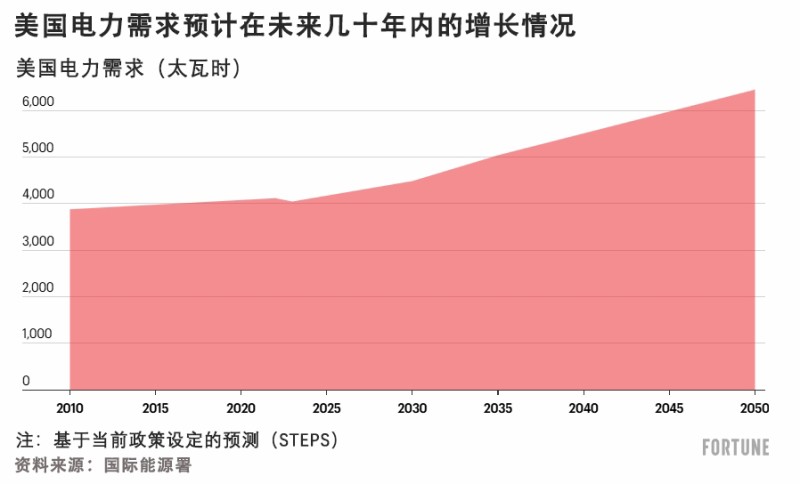
需求增长中很大一部分源于超大规模企业:亚马逊(Amazon)、谷歌(Google)和微软(Microsoft)仅在2025年就计划分别投入750亿至1000亿美元用于数据中心建设。
为更直观地感受这些投资规模之巨,全球石油巨头英国石油公司(BP)的总市值仅为800亿美元。例如,Meta计划在路易斯安那州建设的超大型数据中心,所需电力相当于新奥尔良全市用电量的两倍。
新时代能源(NextEra Energy)(《财富》美国500强排名第173位)——这家大型公用事业和电力开发公司的首席执行官约翰·凯奇姆(John Ketchum)估计,预期的燃气发电量甚至无法满足2030年前数据中心20%的电力需求。尽管近年来美国国内页岩气产量创下纪录,但将天然气转化为电力的涡轮机成本不断攀升,且受供应链挑战影响,产量不足。
6月,凯奇姆在《政客》能源峰会上谈及数据中心剩余80%的电力需求时说:“如果不采用可再生能源,那还能选用什么呢?”
尽管这项法案并未完全阻断清洁能源的发展之路,仍会建设大量公用事业规模的风能和太阳能项目,但它确实大幅降低了清洁能源获得税收减免的可能性,并抬高了成本。
该法案的早期版本不仅计划逐步取消税收抵免,还打算对清洁能源项目征收全新的消费税——即便是可再生能源的反对者也对此感到不满。部分预测表明,此税项极有可能致使大多数待建清洁能源项目因经济上不可行而夭折。不过,在参议院最终投票前,这项税收被移除了。
另一项在最后关头作出的修改规定,如果清洁能源项目在2026年6月前开工,即使超出2027年的完工期限,仍可保留税收抵免资格——尽管这一时间表仍然非常紧迫。
同样,该法案保留了税收抵免的“可转让性”——取消该条款曾被视为旨在削弱该计划的秘密“毒丸条款”。可转让性使得小型开发商能够将税收抵免以折价方式转让给大型买家,以此筹集资金,而大型买家则可即刻享受税收优惠。法案最初的众议院版本曾取消可转让性。
该法案还针对可再生能源项目新增了“受关注外国实体”(FEOC)条款。“受关注外国实体”规则原本仅适用于《通胀削减法案》中的电动汽车税收抵免,如今将拓展至所有清洁能源税收抵免领域,这实际上对从中国进口的必要供应链材料形成了限制。众议院版本的法案为项目设定了严苛的“受关注外国实体”条款,不过最终版本采用了更为审慎、分阶段实施的策略。
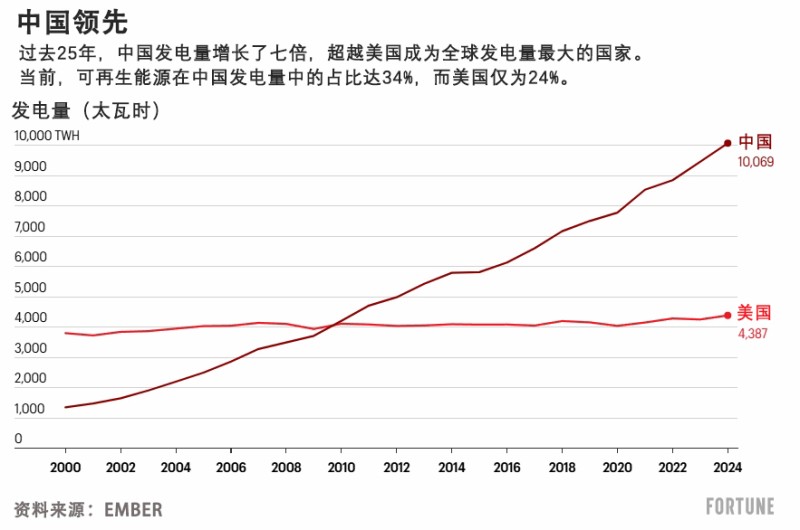
无论美国新建多少制造业设施,许多原材料仍只能从中国进口。在这场人工智能主导权的争夺战中,任何延误或失误都将使中国进一步扩大优势——因为中国正迅速从煤炭转向风能和太阳能,扩大发电规模。
尽管当前中国对煤炭的依赖程度较美国更高,但中国约三分之一的电力源自可再生能源,而美国这一比例约为22%。比如,中国目前的太阳能发电装机容量已超过世界其他国家之和。随着中国加速建设更多发电设施,而美国在新电力基础设施建设上步伐放缓,中国将在人工智能主导权竞争中赢得更大的动力优势。
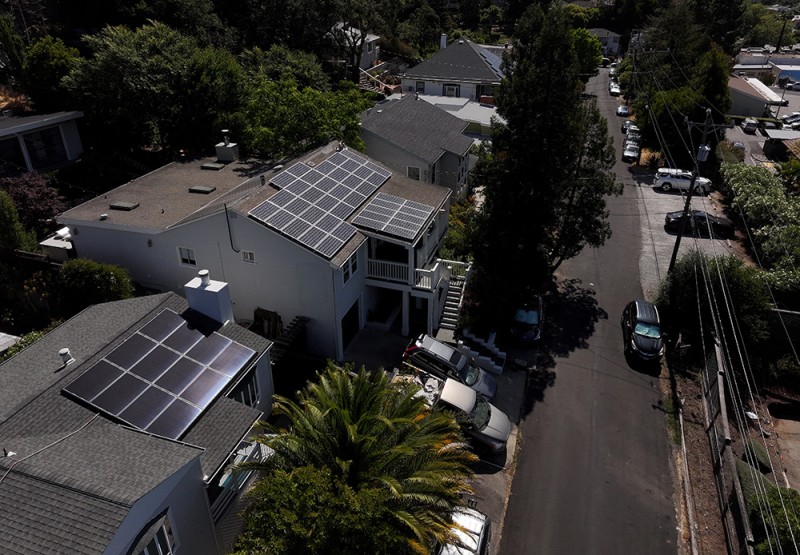
该法案还废除了多项其他清洁能源和能效相关措施。电动汽车税收抵免被取消,住宅太阳能项目以及其他家庭能效相关措施的税收抵免亦未能幸免。该法案出台之际,特朗普政府正计划放宽家用电器等产品的能效标准。
“家庭将承受持续攀升的电费压力,却几乎找不到应对之策,”Rewiring America的马图西亚克表示。“随着人工智能、数据中心以及制造业的能源需求激增,家庭被逼入绝境,不得不支付更高费用,却只能享受更少的服务。”
根据美国能源部数据,自2022年以来,美国家庭用电成本平均已上涨13%。随着数据中心需求增长及天然气价格上涨,加之2030年前液化天然气出口项目相继投产,用电成本预计将继续攀升。
接下来会发生什么?
接下来在可再生能源领域,为抢在税收抵免期限截止前破土动工,各方必将掀起一场激烈角逐。从某种程度上讲,时间限制越严苛,各方为争取税收减免而发起的疯狂冲刺就越激烈——即便最终建成的项目数量会减少。
克拉马丘克表示:“该行业此前就曾有过类似情形。总是急于赶在最后期限前完成项目。”
在推动更多化石燃料发电方面,尚未签订合同的新型燃气涡轮机项目需要大约五年时间才能建成。在此期间,这意味着要提高现有燃气发电厂的利用率,并设法让更多燃煤电厂延长运营时间。“这需要现有燃气或燃煤机组加大马力运转。”克拉马丘克说道。不出所料,该法案后期新增了一项针对煤炭出口的税收减免条款。
到2028年,预计将有50吉瓦的现有燃煤发电产能退役。其中部分电厂必须延长运营时间以填补缺口,但能延长多久尚不明确。“这些电厂大多极为老旧,维持运营需投入巨额资金。”他说道。
需要明确的是,税收抵免的终止并不意味着可再生能源的终结。与共和党结盟的超级政治行动委员会ClearPath Action支持应对气候变化的努力,该组织称该法案相较于此前部分版本有了极大改进,早期版本曾计划对可再生能源加征额外税收,“摧毁”清洁能源行业。“参议院共和党人和众议院盟友拒绝了这种做法,并保留了一些金融工具以加速美国创新并推动美国制造业投资。”ClearPath首席执行官杰里米·哈雷尔(Jeremy Harrell)表示。
然而,这确实意味着风能和太阳能项目的成本将上升。许多地区性公用事业公司和小型开发商可能会放弃规划中的清洁能源项目。不过,超大规模企业显然预算更为充裕。
克拉马丘克表示:“那些本就具备建设条件的新风能和太阳能项目,如今仍可推进,只是成本会大幅上升。如果你是超大规模企业,那么或许有更大的余地去承担更高的成本。”
至于我们其余人?电费和取暖费大概率也会水涨船高。(*)
译者:中慧言-王芳
美国正深陷能源领域的紧迫困局:必须从所有来源扩充电力供应,否则将面临潜在失败。
这意味着在与中国争夺人工智能霸权的竞赛中落败;无法为公民提供充足且价格亲民的电力;以及在气候变化危机愈发严峻的情况下,无法实现能源最大程度清洁化的目标。
尽管唐纳德·特朗普一直宣扬美国的能源主导地位,还通过行政命令加速推进天然气发电和新核电站项目,然而监管和供应链瓶颈,却让这些项目落地仍需数年之久。
与此同时,特朗普的《大而美法案》蓄意阻碍更易于快速建成的风能、太阳能和电池储能项目,而这些项目本可满足被称为“超大规模企业”的大型云服务提供商对数据中心庞大的电力需求。国会于7月3日通过的最终法案(众议院以218票对214票通过)同意迅速取消清洁能源税收抵免,而这类抵免本可助力强化已趋于紧张的电网。
共和党正凭借削减清洁能源税收抵免来支持化石燃料,同时迎合总统本人对可再生能源的抵触情绪:特朗普频繁谴责风能和太阳能存在间歇性问题——即便这种不稳定性正随着可再生能源电池储能技术的持续进步而逐步被抵消。诚然,削减税收抵免也有助于抵消法案中其他方面的联邦支出。
不出所料,清洁能源行业对《大而美法案》表示强烈反对。太阳能产业协会(Solar Energy Industries Association)总裁兼首席执行官阿比盖尔·罗斯·霍珀(Abigail Ross Hopper)表示,该法案将导致公用事业账单上涨、制造工厂关闭、数万个美国建筑业岗位流失,还会削弱电网。
她说:“这项立法将削弱美国在全球的竞争力,破坏我们的能源未来,还会重创那些为经济发展注入动力、强化国家安全的行业——同时将21世纪的科技竞赛拱手让给中国。”
另一方面,由于化石燃料利益集团去年为特朗普和共和党提供资金支持,石油和天然气游说团体——这些团体常谴责清洁能源税收抵免不公平——对最终法案表示赞赏。
石油和天然气行业组织美国西部能源联盟(Western Energy Alliance)总裁梅丽莎·辛普森(Melissa Simpson)称赞这是“一项具有里程碑意义的法案,能够释放出我们所需的能源”。她特别提及“推动在公共土地上进行石油和天然气开采的条款”,以及叫停针对天然气排放实施“过度征税”的做法。
“能源主导”还是“能源丰裕”?
最终法案规定,将迅速取消所有在2027年底前未能投产的清洁能源项目的税收抵免,不过对2026年6月前就已开工的项目予以豁免。参议院最初的措辞相对宽松,要求在2027年底前开工即可——对于那些迫切想要启动项目的人而言,这一看似细微的时间线差异,实则影响巨大。
这不仅是清洁能源开发商或环保倡导者面临的问题;它可能会大幅延缓美国计划中迫切需要达成的发电量快速提升进程。简而言之,这意味着电力需求与日俱增的科技和制造业,以及不断增长的人口,都将面临供电不足——这意味着所有人将面临更高的电费账单,还可能出现电力短缺乃至停电的状况。
非营利组织Rewiring America的首席执行官阿里·马图西亚克(Ari Matusiak)表示:“这项法案不仅会加重家庭负担,还会损害国家利益。我们需要低成本、充足的能源来参与全球竞争。我们将集体陷入更贫困、更脆弱的境地,也愈发难以在瞬息万变的世界中保持领先优势。”毕竟,根据美国能源部的数据,去年美国新增发电量中近90%来自可再生能源。
标普全球大宗商品洞察预测,将大多数项目的完成期限提前至2027年,会导致未来10年美国清洁能源项目建设量减少约20%。
标普全球(S&P Global)气候市场与政策分析主管罗曼·克拉马丘克(Roman Kramarchuk)表示:“这一影响极为重大。这并非占比微小的20%,而是占新增部署量绝对多数的20%。”
他补充道:“情况不容乐观,最终结果将是推高电力成本。”
科技界、公用事业公司和政治温和派不再呼吁所谓的“能源主导”,而是愈发迫切地恳请扩大“能源丰裕”局面——这一立场主张接纳所有能源形式,以更快提升产能并助力压低价格。但两党都受意识形态束缚,未能对一项同时涵盖清洁能源与天然气的战略予以支持——共和党将矛头指向可再生能源,民主党则抵制化石燃料。
尽管如此,代表全国投资者所有的电力公司的爱迪生电气研究所(EEI)等组织仍在极力倡导这一策略。爱迪生电气研究所主席兼爱克斯龙公司(Exelon)首席执行官卡尔文·巴特勒(Calvin Butler)在接受《财富》杂志采访时表示:“我们行业正处于前所未有的时期,自空调诞生以来,从未经历过如此规模的负荷增长。我们必须新建发电设施。这需要采取‘全方位’的能源组合策略——涵盖核能、天然气、风能、太阳能以及电池储能等新技术。”
巴特勒表示,如果该法案允许清洁能源项目在2027年前开工(若能再延后些则更为理想),他会支持这项立法。他表示:“我们认为税收抵免至关重要。我们坚信,如果不将可再生能源纳入解决方案,就无法实现能源主导。”
我们为何需要如此多的电力?
国际能源署的数据显示,在过去几十年美国电力需求相对平稳之后,预计2023年至2035年国内电力消费量将激增25%,2023年至2050年将增长约60%。
需求增长中很大一部分源于超大规模企业:亚马逊(Amazon)、谷歌(Google)和微软(Microsoft)仅在2025年就计划分别投入750亿至1000亿美元用于数据中心建设。
为更直观地感受这些投资规模之巨,全球石油巨头英国石油公司(BP)的总市值仅为800亿美元。例如,Meta计划在路易斯安那州建设的超大型数据中心,所需电力相当于新奥尔良全市用电量的两倍。
新时代能源(NextEra Energy)(《财富》美国500强排名第173位)——这家大型公用事业和电力开发公司的首席执行官约翰·凯奇姆(John Ketchum)估计,预期的燃气发电量甚至无法满足2030年前数据中心20%的电力需求。尽管近年来美国国内页岩气产量创下纪录,但将天然气转化为电力的涡轮机成本不断攀升,且受供应链挑战影响,产量不足。
6月,凯奇姆在《政客》能源峰会上谈及数据中心剩余80%的电力需求时说:“如果不采用可再生能源,那还能选用什么呢?”
尽管这项法案并未完全阻断清洁能源的发展之路,仍会建设大量公用事业规模的风能和太阳能项目,但它确实大幅降低了清洁能源获得税收减免的可能性,并抬高了成本。
该法案的早期版本不仅计划逐步取消税收抵免,还打算对清洁能源项目征收全新的消费税——即便是可再生能源的反对者也对此感到不满。部分预测表明,此税项极有可能致使大多数待建清洁能源项目因经济上不可行而夭折。不过,在参议院最终投票前,这项税收被移除了。
另一项在最后关头作出的修改规定,如果清洁能源项目在2026年6月前开工,即使超出2027年的完工期限,仍可保留税收抵免资格——尽管这一时间表仍然非常紧迫。
同样,该法案保留了税收抵免的“可转让性”——取消该条款曾被视为旨在削弱该计划的秘密“毒丸条款”。可转让性使得小型开发商能够将税收抵免以折价方式转让给大型买家,以此筹集资金,而大型买家则可即刻享受税收优惠。法案最初的众议院版本曾取消可转让性。
该法案还针对可再生能源项目新增了“受关注外国实体”(FEOC)条款。“受关注外国实体”规则原本仅适用于《通胀削减法案》中的电动汽车税收抵免,如今将拓展至所有清洁能源税收抵免领域,这实际上对从中国进口的必要供应链材料形成了限制。众议院版本的法案为项目设定了严苛的“受关注外国实体”条款,不过最终版本采用了更为审慎、分阶段实施的策略。
无论美国新建多少制造业设施,许多原材料仍只能从中国进口。在这场人工智能主导权的争夺战中,任何延误或失误都将使中国进一步扩大优势——因为中国正迅速从煤炭转向风能和太阳能,扩大发电规模。
尽管当前中国对煤炭的依赖程度较美国更高,但中国约三分之一的电力源自可再生能源,而美国这一比例约为22%。比如,中国目前的太阳能发电装机容量已超过世界其他国家之和。随着中国加速建设更多发电设施,而美国在新电力基础设施建设上步伐放缓,中国将在人工智能主导权竞争中赢得更大的动力优势。
该法案还废除了多项其他清洁能源和能效相关措施。电动汽车税收抵免被取消,住宅太阳能项目以及其他家庭能效相关措施的税收抵免亦未能幸免。该法案出台之际,特朗普政府正计划放宽家用电器等产品的能效标准。
“家庭将承受持续攀升的电费压力,却几乎找不到应对之策,”Rewiring America的马图西亚克表示。“随着人工智能、数据中心以及制造业的能源需求激增,家庭被逼入绝境,不得不支付更高费用,却只能享受更少的服务。”
根据美国能源部数据,自2022年以来,美国家庭用电成本平均已上涨13%。随着数据中心需求增长及天然气价格上涨,加之2030年前液化天然气出口项目相继投产,用电成本预计将继续攀升。
接下来会发生什么?
接下来在可再生能源领域,为抢在税收抵免期限截止前破土动工,各方必将掀起一场激烈角逐。从某种程度上讲,时间限制越严苛,各方为争取税收减免而发起的疯狂冲刺就越激烈——即便最终建成的项目数量会减少。
克拉马丘克表示:“该行业此前就曾有过类似情形。总是急于赶在最后期限前完成项目。”
在推动更多化石燃料发电方面,尚未签订合同的新型燃气涡轮机项目需要大约五年时间才能建成。在此期间,这意味着要提高现有燃气发电厂的利用率,并设法让更多燃煤电厂延长运营时间。“这需要现有燃气或燃煤机组加大马力运转。”克拉马丘克说道。不出所料,该法案后期新增了一项针对煤炭出口的税收减免条款。
到2028年,预计将有50吉瓦的现有燃煤发电产能退役。其中部分电厂必须延长运营时间以填补缺口,但能延长多久尚不明确。“这些电厂大多极为老旧,维持运营需投入巨额资金。”他说道。
需要明确的是,税收抵免的终止并不意味着可再生能源的终结。与共和党结盟的超级政治行动委员会ClearPath Action支持应对气候变化的努力,该组织称该法案相较于此前部分版本有了极大改进,早期版本曾计划对可再生能源加征额外税收,“摧毁”清洁能源行业。“参议院共和党人和众议院盟友拒绝了这种做法,并保留了一些金融工具以加速美国创新并推动美国制造业投资。”ClearPath首席执行官杰里米·哈雷尔(Jeremy Harrell)表示。
然而,这确实意味着风能和太阳能项目的成本将上升。许多地区性公用事业公司和小型开发商可能会放弃规划中的清洁能源项目。不过,超大规模企业显然预算更为充裕。
克拉马丘克表示:“那些本就具备建设条件的新风能和太阳能项目,如今仍可推进,只是成本会大幅上升。如果你是超大规模企业,那么或许有更大的余地去承担更高的成本。”
至于我们其余人?电费和取暖费大概率也会水涨船高。(*)
译者:中慧言-王芳
America is facing an energy imperative: Grow power from all sources or face potential failure.
That’s failure in the race against China for AI supremacy; failure to provide ample affordable power for its citizens; and failure to make energy as clean as possible while climate change woes mount with each passing year.
As President Donald Trump has touted American energy dominance, he has leaned on executive orders to expedite natural-gas-fired power and new nuclear plants. But regulatory and supply-chain bottlenecks still put those projects several years out.
Meanwhile, Trump’s “One Big Beautiful Bill” is intentionally handicapping more easily and faster-built wind, solar, and battery storage projects that would help satiate the massive data-center power demands of the large-scale cloud-service providers known as hyperscalers. The final legislation approved by Congress on July 3 (the House concurred on a 218–214 vote) agrees to quickly unwind the clean-energy tax credits that could have helped strengthen an already stretched electric grid.
The GOP is leaning on clean-energy cuts to support fossil fuels, while channeling the president’s own anti-renewables sentiments: He has often decried the intermittent nature of wind and solar—even if that unpredictability is increasingly offset by the growth of battery storage for renewable energy. And of course, cutting tax credits helps offset federal spending elsewhere in the bill.
Unsurprisingly, the clean-energy industry is up in arms about the BBB legislation. Abigail Ross Hopper, president and CEO of the Solar Energy Industries Association, said it will increase electricity bills, shut down manufacturing facilities, cost many thousands of U.S. construction jobs, and weaken the grid.
“This legislation [will] set back America’s global competitiveness, destabilize our energy future, and weaken the very industries that power our economy and strengthen our national security—while surrendering the 21st-century tech race to China,” she said.
On the other hand, with money flowing from fossil-fuel interests to support Trump and Republicans last year, oil and gas lobbyists—who frequently decry clean-energy tax credits as unfair—praised the final bill.
Melissa Simpson, president of the oil and gas industry’s Western Energy Alliance, hailed the “monumental bill that’ll unleash the energy we need.” She specifically touted “provisions promoting oil and natural gas production on public lands” and the halting of the emissions-related “excessive tax on natural gas.”
“Energy dominance” or “energy abundance”?
The final legislation rapidly phases out tax credits for all clean energy projects not online by the end of 2027—exempting those that break ground by June 2026. The Senate’s original, less draconian language required starting construction by the end of 2027—a subtle but massive timeline difference for those scrambling to get projects up and running.
This isn’t just a problem for clean energy developers or environmental advocates; it could dramatically slow the country’s planned and much-needed rapid increases in power generation. In simple terms, that means less power for increasingly electricity-hungry tech and manufacturing sectors, and a growing population—meaning higher power bills for everyone, and possible shortfalls and brownouts.
“The bill doesn’t just burden families, it undermines our country,” said Ari Matusiak, CEO of the Rewiring America nonprofit. “We need low-cost, abundant energy to compete globally. We will become collectively poorer, less resilient, and less equipped to lead in a rapidly changing world.” After all, renewables accounted for almost 90% of new power generation installed in the U.S. last year, according to the Department of Energy.
Cutting deadlines back to 2027 for completing most projects will result in about 20% fewer clean-energy projects being built in the U.S. over the next 10 years, according to S&P Global Commodity Insights projections.
“That’s extremely meaningful,” said Roman Kramarchuk, head of climate market and policy analysis for S&P Global. “This isn’t 20% of a small share; this is 20% of the strong majority of the new deployments.
“That’s rough,” he added. “What it will do is increase costs for power.”
Instead of so-called energy dominance, there’s a growing plea from tech, utilities, and political moderates for scaled-up “energy abundance”—a stance that embraces all forms of power to more rapidly build capacity and help push down prices. But both political parties have been tripped up by ideology, failing to support a strategy that includes clean energy and natural gas—with the GOP targeting renewables and Democrats fighting fossil fuels.
That’s despite the urging of the Edison Electric Institute (EEI), an organization representing investor-owned electric utilities nationwide, and many others. “We’re in unprecedented times for our industry; we haven’t seen this type of load growth since the advent of air conditioning,” EEI chairman and Exelon CEO Calvin Butler told Fortune. “We have to get new power generation built. It’s going to take the all-of-the-above portfolio approach—nuclear, gas, wind, solar, and new technologies like battery storage.”
Butler said he would have supported the legislation if it allowed clean energy projects to break ground by 2027, although later was preferred. “We believe the tax credits are key,” he said. “We don’t believe we can get to the energy dominance without having renewables as part of the solution.”
Why do we need so much power?
After a couple of decades during which U.S. power demand has remained relatively stagnant, domestic electricity consumption is expected to spike by 25% from 2023 to 2035 and roughly 60% from 2023 to 2050, according to the International Energy Agency.
A big part of that increase comes from the hyperscalers: Amazon, Google, and Microsoft are investing anywhere from $75 billion to $100 billion each into building data centers for 2025 alone.
To put those dollars in context, the entire market cap of Big Oil giant BP is $80 billion. A planned super-sized Meta data center in Louisiana, for instance, would require twice the power used by the whole city of New Orleans.
John Ketchum, CEO of NextEra Energy (No. 173 on the Fortune 500)—a massive utility and power developer—estimates that anticipated gas-fired generation cannot even meet 20% of the data-center needs from now until 2030. Despite record volumes of shale gas produced domestically in recent years, the turbines required to turn that gas into electricity are getting more costly and there aren’t enough being manufactured because of supply-chain challenges.
“If it’s not renewables, what is it going to be?” Ketchum said of the remaining 80% of data-center power needs, while speaking at the Politico Energy Summit in June.
While the legislation does not cripple clean energy—a lot of utility-scale wind and solar will still be built—it does substantially weaken its access to tax breaks and increase costs.
A prior version of the bill didn’t just phase out the tax credits; it also placed a brand-new excise tax on clean-energy projects—one that even renewable energy opponents bristled at. Some projections estimated the tax easily could have killed most pending clean energy projects, making them economically not viable. That tax was removed just before final Senate voting.
Another last-minute change exempted clean-energy projects from losing the tax credit if they break ground by June 2026, even if they exceed the 2027 completion deadline—although these are still very tight timelines.
Likewise, the legislation keeps the “transferability” of tax credits—the removal of which was considered a backdoor “poison pill” meant to cripple the program. Transferability allows smaller developers to raise capital by transferring tax credits at a discount to larger buyers that can immediately take advantage of the tax benefits. The original House version of the bill had eliminated transferability.
The legislation also places new “foreign entity of concern” (FEOC) provisions on renewable energy projects. The FEOC rules, which only applied to electric vehicle tax credits in the Inflation Reduction Act, would now apply to all clean-energy tax credits, essentially limiting needed supply-chain materials from China. The House bill placed arduous FEOC provisions on projects, but the final version takes a more measured, phased-in approach.
No matter how much new manufacturing is built in the U.S., many of the materials still only come from China and any delays or missteps cede more ground to China in the middle of a brawl for AI dominance as China rapidly builds more power from coal to wind and solar.
While China is currently more reliant on coal than the U.S., China now sources about one-third of its power from renewables—compared to about 22% in the U.S.—and China is currently installing more solar power, for instance, than the rest of the world combined. As China continues to rapidly build more generation, U.S. slowdowns in any forms of new electricity infrastructure will give China more of a power boost in the AI race to supremacy.
The legislation also undoes a bevy of other clean-energy and efficiency efforts. The electric-vehicle tax credit is axed, as are credits for residential solar projects and for other home-energy efficiency efforts. The megabill also comes as the Trump administration aims to roll back energy-efficiency standards for home appliances and more.
“Families will face rising electricity costs with fewer tools to do anything about it,” said Matusiak of Rewiring America. “As energy demand from AI, data centers, and manufacturing explodes, households are boxed in, expected to pay more while getting less.”
Residential electricity costs in the U.S. already have risen by 13% on average from 2022 until now, according to the Department of Energy. And they are projected to keep increasing with demand growth from data centers and higher natural-gas prices as a wave of liquefied natural gas export projects come online between now and 2030.
What happens next?
Next up in the renewables sector is the continuation of a rabid race to break ground on clean-energy projects to beat the tax credit deadlines. In a way, the more stringent the timelines, the bigger and faster is the mad dash to qualify for tax breaks—even if fewer will be built overall
“This sector has done this before,” Kramarchuk said. “There’s always the rush to hit the deadlines.”
In the push for more fossil-fuel-sourced power, new gas-fired turbines that aren’t already contracted will take five years or so to be built. In the meantime, that means increasing the utilization of existing gas-fired power plants and working to keep more coal plants open for longer. “It means running your existing gas or coal units harder,” Kramarchuk said. Not coincidentally, a tax break for coal exports was a late add to the legislation.
By 2028, 50 gigawatts of existing coal capacity are scheduled to be retired. Some of those plants must stay online for longer to bridge the gap, but how much longer is even possible is unclear. “A lot of those plants are very old and require significant capital investments to keep them going,” he said.
To be clear, the end of tax credits does not mean the death of renewables. The GOP-aligned super PAC ClearPath Action, which supports efforts to combat climate change, called the bill a much better draft than some earlier versions that would have imposed additional taxes on renewables and “devasted” the clean energy industry. “Senate Republicans and House allies rejected that approach and preserved some financial tools to accelerate American innovation and invest in American manufacturing,” said ClearPath CEO Jeremy Harrell.
It does mean, however, that wind and solar projects will become more expensive. A lot of regional utilities and smaller developers may kill the clean energy projects on their drawing boards. But the hyperscalers, of course, have bigger budgets.
“New wind and solar that would’ve been built, can be built. It’s just going to cost a lot more,” Kramarchuk said. “If you’re a hyperscaler, then you probably have more latitude to pay more.”
As for the rest of us? Our electricity and heating bills will likely rise too.

